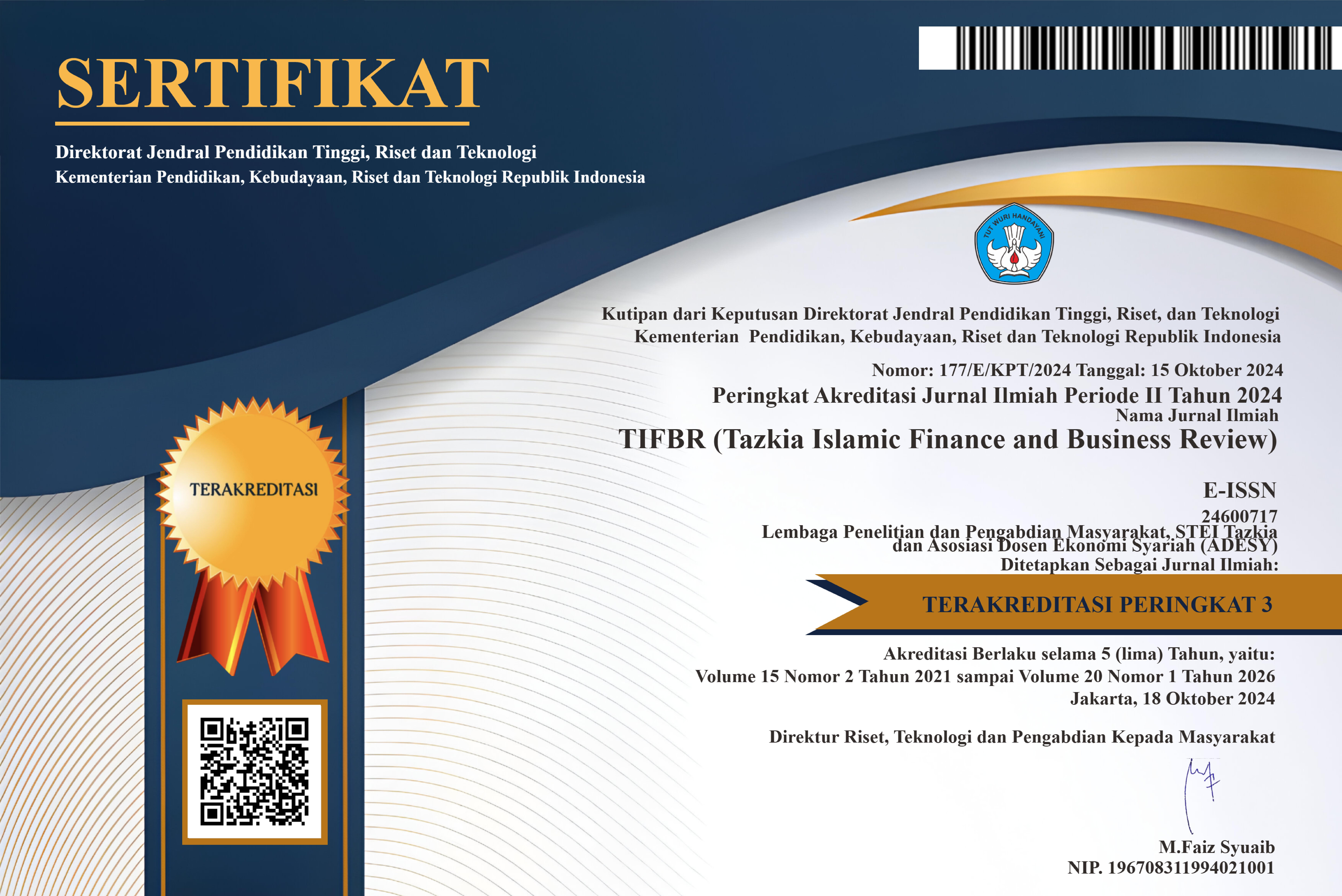MENGURAI MASALAH PENGEMBANGAN SUKUK KORPORASI INDONESIA MENGGUNAKAN ANALYTIC NETWORK PROCESS
DOI:
https://doi.org/10.30993/tifbr.v6i2.55Abstract
Sukuk as an instrument of Islamic finance has created the competitive advantages for the practitioners of Islamic finance, which it can contribute of funding mobilization in economic development. Although in size of issuance and emission growing rapidly, but the growth of sukuk has slow moving. These causes are consist of 1) emiten problem: lack of commitment, understanding, averse to risk, and low of corporate rating; 2) investor problem: lack of knowledge, averse to risk, diversification, profitoriented/floating majority; 3) supporting problem: incentive, taxation, socialization, understanding of underwriter; 4) market problem: conventional dominant, lack of instruments, low of size of issuance, liquidity of secondary market. Therefore, this study try to identifies some causes, factors and hindrances the development of corporate sukuk in Indonesia. The results show that the primary problems come from: 1) lack of understanding (emiten); liquidity of secondary market (market); 3) lack of knowledge (investor); 4) incentive (supporting); 5) low of size of issuance. The primary solutions are: 1) intensive socialization; 2) encouragement to state owned corporation; 3) taxation regulation; 4) product innovation; 5) incentive. Furthermore, the levels of agreement among respondents (Kendall’s coefficient) conclude that practitioners show higher rater agreement than that of experts. Therefore, in applying of sukuk, appraisal and opinion of practitioners can be used in considering.
JEL Classification : C14, G39
Keywords : ANP, Sukuk Corporate
Downloads
Published
How to Cite
Issue
Section
License

Tazkia Islamic Finance and Business Review (TIFBR) is licensed under a Creative Commons Attribution-NonCommercial 4.0 International License.
Authors who publish with this journal agree to the following terms:
- Authors retain copyright and grant the journal right of first publication with the work simultaneously licensed under a Creative Commons Attribution License that allows others to share the work with an acknowledgment of the work's authorship and initial publication in this journal.
- Authors are able to enter into separate, additional contractual arrangements for the non-exclusive distribution of the journal's published version of the work (e.g., post it to an institutional repository or publish it in a book), with an acknowledgment of its initial publication in this journal.
- Authors are permitted and encouraged to post their work online (e.g., in institutional repositories or on their website), as it can lead to productive exchanges, as well as earlier and greater citation of published work (See the Effect of Open Access).

















